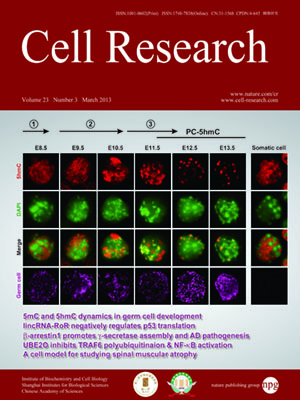
Volume 23, No 3, Mar 2013
ISSN: 1001-0602
EISSN: 1748-7838 2018
impact factor 17.848*
(Clarivate Analytics, 2019)
Volume 23 Issue 3, March 2013: 317-319
RESEARCH HIGHLIGHTS
Overcoming the chromatin barrier to end resection
Huan Chen1 and Lorraine S Symington1
1Department of Microbiology & Immunology, Columbia University Medical Center, New York, NY 10032, USA
Correspondence: lss5@columbia.edu(Lorraine S Symington,)
Repair of double-strand breaks by homologous recombination requires Repair of double-strand breaks by homologous recombination requires 5′-3′ resection of the DNA ends to create 3′ single-stranded DNA tails. While much progress has been made in identifying the proteins that directly participate in end resection, how this process occurs in the context of chromatin is not well understood. Two papers in Nature report that Fun30, a poorly characterized member of the Swi2/Snf2 family of chromatin remodelers, plays a role in end processing by facilitating the Exo1 and Sgs1-Dna2 resection pathways.
Cell Research (2013) 23:317–319; doi:10.1038/cr.2012.148; published online 13 November 2012
FULL TEXT | PDF
Browse 2194


